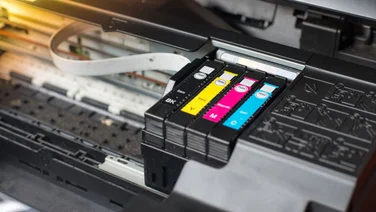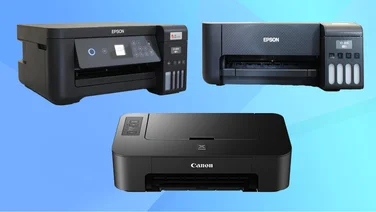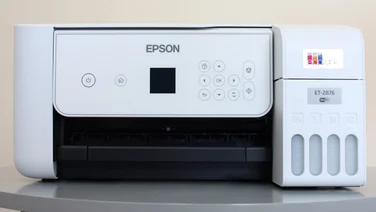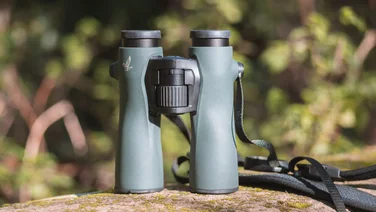To help us provide you with free impartial advice, we may earn a commission if you buy through links on our site. Learn more



Not everyone wants a digital SLR, but many do want more than a compact camera. Not only do they want to take higher quality photos, but they want the SLR’s flexibility when it comes to changing lenses. What turns most novices off though is a DSLR’s perceived bulk – it’s no longer as easy to carry your camera everywhere you go.
When Olympus and Panasonic announced the Micro Four Thirds format in August 2008, nobody expected a new segment of interchangeable lens cameras to take off as quickly as it did; however, in December, these quasi-compact cameras accounted for 10 per cent of all interchangeable lens camera sales, according to market research firm Gfk.
This is largely thanks to the excellent cameras we’ve seen from both Olympus and Panasonic, which include the original Olympus E-P1 and Panasonic Lumix GF1, but other manufacturers are starting to take note. Samsung and Sony, have both revealed their intentions to get into the same market.

Announced just eight months after the original E-P1, the E-PL1 is designed to complement the E-P1 rather than replace it. Olympus has designed it to be easier to use for novices. It has achieved this by overhauling the E-PL1’s user interface with the new Live Guide, which replaces the oft unfamiliar camera terminology with more familiar terms. When the camera’s in iAuto mode, pressing the Start/OK button activates Live Guide, where you’re presented with six icons down the right hand edge of the screen. There’s Change Colour Saturation, Change Colour Image, Change Brightness, Blur Background, Express Motions and finally Shooting Tips, which gives you advice on how to photograph certain subjects.

The new functions are quite powerful, but the names are a little confusing and you’re also able to only control one at a time, thus limiting creativity. For example, in order to get the best photo of a flower, you might want to first blur the background (use a wide aperture) and then adjust the colour saturation to make the image more vibrant. You can’t do this on the E-PL1 without venturing into the semi-automatic or manual exposure modes, but that’s maybe something that could be added in a future model.
Unfortunately, the semi-automatic and manual modes also have limitations, as there’s no control dial on the E-PL1. This is unlikely to please enthusiasts, but does make it more like a compact camera. In order to increase the aperture in aperture mode for instance, you need to press the ‘up’ button to switch the camera into aperture adjustment mode and then the ‘up’ or ‘down’ button to change the aperture. You can also change exposure compensation at the same time by using the ‘left’ and ‘right’ buttons.
This is a little cumbersome and is a step backwards. For novices who want to take more creative pictures, but have found themselves intimidated by jargon or complex controls, the simpler control system will be a boon until they try to get a little more creative and bump into Live Guide’s limitations.
Time between shots isn’t stellar either and it pales in comparison to similarly priced or even cheaper DSLRs in that respect. The main culprit is the camera’s contrast detect auto-focus system, but that’s a familiar trait of all Micro Four Thirds cameras. It uses an 11-point system, where you can either select all AF points or one in particular. If you turn Face Detect on too, this increases to 25-points, but you lose the manual selection capabilities.
On a positive note, the E-PL1 includes a built-in flash which, while not being particularly powerful, is something that was conspicuously absent from both the E-P1 and E-P2. It’s activated via a small switch above the LCD and, thanks to its double hinge, sits well away from the body to help prevent red eye.
What’s more, the images that come out of the E-PL1 are excellent given its compact size – the body is no bigger than Canon’s PowerShot G11 and the 14-42mm F/3.5-5.6 lens is less than half the size of a typical DSLR’s kit lens. That’s all down to the E-PL1’s 12.3 megapixel Live MOS 4/3in sensor and the metering system, which are both the same as those used in the E-P1 and E-P2.

Images are not only well exposed with good dynamic range and colour, but also very sharp. Resolution and noise control are both very good, all the way up to ISO 3200. While photos aren’t as crisp at ISO 3200 as they are at lower ISOs, images are most definitely useable even at this setting. You would never find a compact being able to achieve the same levels of quality, that’s for sure.
The E-PL1 also includes six Art modes – Pop Art, Soft Focus, Grainy Film, Pin Hole, Diorama (the ‘Tilt-Shift effect’) and Gentle Sepia – and 19 scene modes, which help to give the novice even more control. Performance in the Art mode is sluggish though with the 2.7in LCD screen refreshing at less than 10 fps, as the camera processes the effect in real time.
The lens controls chromatic aberration and flare very well, but there’s a generous helping of barrel distortion at the wide end. It’s also a little soft at the telephoto end of its range, but this doesn’t have a massive impact on overall image quality below ISO 800. The lens’ sweetspot is around the 25mm focal length (50mm actual), where images are very crisp and distortion-free.
With its dedicated video button, the E-PL1 is also a fairly useful video camera. It supports up to 720p at 30 fps with the relatively inefficient Motion JPEG format, with a maximum recording time of seven minutes in HD. The shutter button also remains active while you’re recording, meaning you can capture full-resolution stills while recording.
For focusing, you can choose between single shot, continuous or manual modes. However, because it’s electronically linked, it’s just about audible on the soundtrack. Video quality is a little soft compared to the E-PL1’s static image quality, but it’s still very good for a camera of this size.
Overall, while the E-PL1 does have some limitations, it’s a very good camera for beginners looking to develop their skills. The Live Guide is excellent and, after a brief explanation of what each Live Guide function controlled, we managed to get several novice photographers to start expressing themselves a lot more in their photos. When they saw the results on the E-PL1’s 2.7in screen, they quickly realised what a decent camera could do for their photography.
The E-PL1 doesn’t do enough to replace the DSLR, which can be bought for a lot less, but its user interface will help beginners looking to develop, and the images it produces are almost as good. As either a DSLR companion or an alternative to a high-end compact, we think it’s well-worth paying that bit more for something like this and, given how far the E-P1’s price has dropped since its launch, the E-PL1 will likely become much cheaper in a few months.






